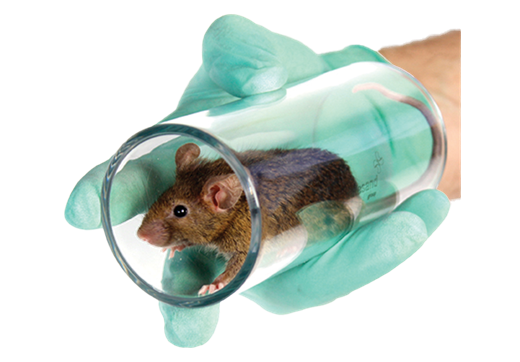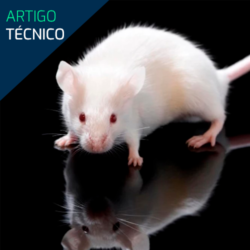[vc_row full_width=”stretch_row_content_no_spaces” css=”.vc_custom_1661448930417{padding-top: 300px !important;padding-bottom: 220px !important;background: #a3a3a3 url(https://steq.com.br/wp-content/uploads/2024/07/blog_artigo-1.jpg) !important;}”][vc_column][vc_column_text]
7 reasons why you should automate your washing processes
[/vc_column_text][vc_separator color=”sandy_brown” border_width=”3″ el_width=”10″][/vc_column][/vc_row][vc_row css=”.vc_custom_1564073259210{margin-top: 25px !important;margin-bottom: 25px !important;}”][vc_column width=”3/4″][vc_column_text css=”.vc_custom_1722275180536{padding-bottom: 20px !important;}”]
Improving research with refined mouse handling techniques
Handling mice by the tail causes increased stress and anxiety. Although they are usually suspended for only a few seconds before being supported by the researcher, this practice negatively affects the mice’s behavior and willingness to interact with the researchers. Ultimately, this affects the quality of research (Henderson et al., 2020). Many countries have established strict regulations and guidelines to minimize tail handling. Recently, the Swedish National Committee for the Protection of Animals Used for Scientific Purposes released a statement – Don’t lift mice by the tail! – expressing that “Mice used in research should not be captured, lifted or moved by the tail.” Instead, researchers are being encouraged to choose a more refined method that doesn’t involve tail lifting.
What is refined handling?
Refined handling, also known as non-aversive handling, refers to the methods used to catch laboratory animals, such as mice, without causing stress. Traditionally, mice are caught by the tail, causing stress and anxiety. Refined handling aims to minimize these adverse effects.
According to the Refined Mouse Handling Course, the two most common refined handling methods are suction cups and handling through tunnels.
Benefits of Refined Handling Methods
Refined handling benefits both mice and handlers and improves the quality of research. Studies show that refined handling reduces anxiety in mice, as validated by tests such as the elevated cross maze, social novelty, open field, and light-dark box tests. Indicators of stress, such as over-urination and defecation, are reduced with refined handling. The mice are less stressed during restraint and are more willing to approach the researchers, even after recent procedures. (Reference Table) When mice are habituated to refined handling, they show fewer adverse reactions and are more cooperative during breeding and routine procedures. Tunnel handling is particularly effective for handling aggressive mice, reducing the risk of injury to researchers. Ultimately, refined handling leads to better search results. By reducing stress and promoting normal behaviors, trust in the data collected increases.
Considering the 3Rs and 3Hs
The 3Rs – Replace, Reduce, Refine – provide a framework for animal research and are embedded in organizational regulations and policies. The handling falls under refinement, along with housing and breeding protocols, and is widely practiced in the UK and other parts of the world. The latest initiative, 3Hs – Housing, Handling, Habituation – was developed by Prof. Emma Robertson and her team at the University of Bristol. This initiative focuses on improving the lifelong experience of laboratory mice by increasing positive experiences and reducing suffering. Key strategies include:
- Adoption of methods that reduce physical restraint and aversion
- Provide positive experiences, such as anticipation of rewards, to encourage rodents to enjoy human interactions
Habituating mice to refined handling methods, such as tunnels or tubes, encourages positive experiences and minimizes tail handling, which is a stress-inducer.
Handling options with tubes
When exploring the devices available for tunnel handling, many options are available, from cardboard to polycarbonate varieties, all with different use cases. The choice between cardboard and polycarbonate handling tubes depends on the specific needs and priorities of the laboratory. Cardboard tubes are best suited for short-term, cost-sensitive applications with lower hygiene demands. Mice may find them more attractive in cages as they can chew on them and use them for nesting, which can reduce stress. In contrast, polycarbonate pipes offer a durable, reusable, and hygienic solution, making them preferable for long-term use and situations that require strict contamination control, as they are ideal for autoclaving and biosecurity.
Transparent handling tubes
Made of polycarbonate with injection-molded edges, it offers full visibility of the mouse, aiding in routine checks and post-operative monitoring without adding to the stress. With a thickness of 3 mm, the transparent handling tubes from the manufacturer DATESAND come in 100 mm, 130 mm and 110 mm fitting options. Regular tubes provide safety during handling, while snap-on tubes promote familiarization and natural climbing behaviors.
Handling tubes for fitting While handling tunnels do not need to be positioned in the cage to be effective, having a tunnel in the cage increases recognition of a familiar safe location, as well as providing cage enrichment. The tube when positioned elevated in the cage promotes natural climbing and research behaviors of mice. It will also provide a safe haven for mice and an elevated platform in the unlikely event of cage flooding.

Whatever your research and environmental enrichment needs, our partner DATESAND has the right option for you. To learn more about the complete range available for your vivarium, contact us.
Click here and access the article on our LinkedIn as well!
For more information about DATESAND’s line of equipment, contact our experts at contato@steq.com.br.[/vc_column_text][/vc_column][/vc_row]






